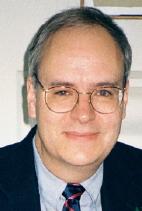Professor Neil C. Rowe
The Wired Magazine article Cyberterrorism Watch: Threat Level to Grill Infowar Scholars This Weekend said
“With the United States’ top spy calling for blanket internet surveillance to counter cyber attacks, and the CIA claiming that hackers are already triggering multi-city power outages, there’s never been a better time to prepare for Cybermageddon!On Saturday, I’ll be moderating a panel on the myths and facts of cyber terrorism at the Computer Professionals for Social Responsibility’s Technology in Wartime conference at Stanford University. The panelists are Dr. Herb Lin from the National Academies’ National Research Council, and cybersecurity expert Professor Neil Rowe from the U.S. Naval Postgraduate School.”
Neil C. Rowe, Ph.D., E.E. is Professor of Computer Science, Center for Information Security Research (CISR), U.S. Naval Postgraduate School. His interests include a broad range of topics in applied artificial intelligence. Recent work has focused on modeling and implementation of deception in cyberspace as well as automated surveillance for suspicious behavior.
The Naval Postgraduate School in Monterey, California is a graduate university attended by all the United States Armed Services, the Department of Homeland Security, and numerous international allies. It specializes in education and research focused on national security issues.
Neil is chair of the Autonomous Systems Track of the Computer Science Department. Purpose of Autonomous Systems Track: The rapid progress of software and computer technology permits great increases in efficiency by automation of many tasks, with the goal of reducing effort for personnel and improving quality and reliability of task performance. Autonomous systems are the main tools to achieve these goals, and they include handheld and wearable devices, robots, traditional machines with standalone software, and networks with distributed software.
In particular, autonomous systems are essential to two of ONR’s twelve “Future Naval Capabilities”: “Knowledge Superiority and Assurance” and “Autonomous Operations”. Autonomous systems can be used in dangerous and remote environments without risking personnel or spreading them too thinly. Military officers need to understand the capabilities of these systems so they can design, adapt, and manage them efficiently and accurately.
Research questions addressed by the track include:
- How can computers understand human languages like English?
- How can computers understand what shapes are visible in pictures and what they are doing?
- How can robots helpfully move among people without interfering with human activities?
- How can computers learn new ideas by observing the world?
- How can computers model human thinking so that we can build simulations of people?
Neil is also affiliated with the Modeling, Virtual Environments, and Simulation (MOVES) curriculum and is on the MOVES Ph.D. Program Committee.
Founded in 2000, the Modeling, Virtual Environments, and Simulation (MOVES) Institute has created education and research programs supporting simulation technologies used by Defense and Homeland Security partners to train personnel and to analyze systems for operational effectiveness.
The unique mix of academic expertise and operational experience with the goal of direct benefit to operators and warfighters makes MOVES a special place.
Neil authored Artificial Intelligence Through Prolog, War Crimes from Cyberweapons, Finding Logically Consistent Resource-Deception Plans for Defense in Cyberspace, and Logical Modeling of Deceptive Negative Persuasion, and coauthored Conditional Entropy for Deception Analysis, Automatically Tracing Information Flow of Vulnerability and Cyber-Attack Information through Text Strings, Thwarting Cyber-Attack Reconnaissance with Inconsistency and Deception, Do Word Clues Suffice in Detecting Spam and Phishing?, Automated Retrieval of Security Statistics from the World Wide Web, and Experiments with a Testbed for Automated Defensive Deception Planning for Cyber-Attacks. Read the full list of his publications!
Neil earned his B.S. In Electrical Engineering at MIT in 1975, his M.S. in Electrical Engineering and Computer Science at MIT in February 1978, his E.E. in Electrical Engineering and Computer Science at MIT in June 1978 with the thesis “An Inductive Tutor for Context-Free Grammar Construction”, and his Ph.D. in Computer Science at Stanford University in 1983 with the thesis “Rule-based Statistical Calculations on a Database Abstract”
